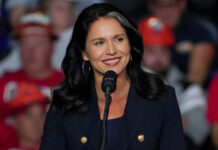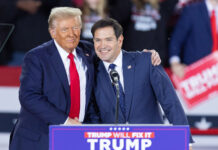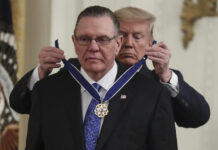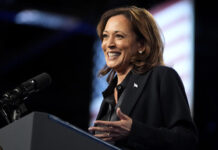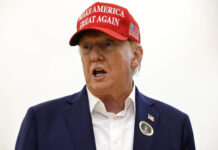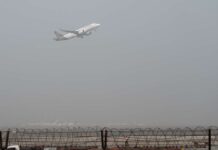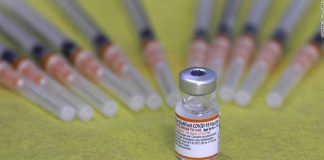JUNE 11, 2020

Stocks suffered their biggest one-day pull-back in three months on Thursday as traders grew concerned about the number of coronavirus cases increasing in some states that are reopening up from lockdowns. Shares that have surged recently on hopes for a smooth reopening of the economy led the declines.
The Dow Jones Industrial Average plunged 1,861.82 points, or 6.9%, to close at 25,128.17. The S&P 500 slid 5.9% to 3,002.10 while the Nasdaq Composite dropped 5.3%. to end the day at 9,492.73. The major averages posted their worst day since March 16, when they all dropped more than 11%. The S&P 500 also logged in its first three-day losing streak since early March.
“You’re seeing the psychology in the market get retested today” as traders weigh the recent uptick in coronavirus hospitalizations and a grim outlook from the U.S. central bank, said Dan Deming, managing director at KKM Financial. “The sense is maybe the market got ahead of itself, which makes sense given the fact that we’ve come so far so fast.”
“The reality is this thing’s going to linger longer than probably the market had through of,” Deming said.
Traders dumped airlines, cruise operators and retailers after piling into those names over the past month amid expectations of a swift economic recovery. Shares of United Airlines, Delta, American and Southwest all dropped more than 10%. Carnival Corp. and Norwegian Cruise Line shares fell more than 14%. Gap and Kohl’s shares traded lower by 7.6% and 10.9%, respectively.
Concerns about a second wave of coronavirus cases have risen as U.S. states push deeper into reopening. Texas has reported three consecutive days of record-breaking Covid-19 hospitalizations. Nine California counties are reporting a spike in new coronavirus cases or hospitalizations of confirmed cases, AP reported Wednesday. Treasury Secretary Steven Mnuchin told CNBC’s Jim Cramer, however, that “we can’t shut down the economy again.”
Friendly monetary policy from the Federal Reserve cannot “offset a severe COVID second wave,” said Dennis DeBusschere, macro research analyst with Evercore ISI, in a note. “With TX, AZ, CA new cases and hospitalizations increasing and investors concerned that recent protest will fuel a wave of infections, the risk of persistently weak economic and earnings growth has increased. S&P fair value estimates are falling as a result.”
Former FDA Commissioner Scott Gottlieb said states such as Arizona and Texas “never really got rid of the first wave.” He added: “It’s not a second wave.”
Overall coronavirus cases in the U.S. topped 2 million, according to the latest figures from Johns Hopkins University.
The downdraft followed two straight days of losses for the 30-stock Dow and S&P 500 as investors ditched reopening trades for the mega-cap tech names. The tech-heavy Nasdaq, however, jumped to a record high on Wednesday and closed above 10,000 for the first time.
Both the S&P 500 and the Dow are still up more than 37% from the coronavirus low. The incredible comeback started with investors betting on technology companies like Amazon that were doing well despite the pandemic, but in the last month reopening bets like airlines have been the biggest gainers. Now investors are rotating back into those tech names and taking profits in the rest of the market.
Traders also sold oil futures contracts amid worries the global economic reopening will get sidetracked. West Texas Intermediate futures dropped 8.2% to settle at $36.34 per barrel. In turn, traditionally safer assets such as bonds and gold rose. The 10-year Treasury note yield dropped to 0.66% and hit its lowest level in more than a week (yields move inversely to prices). Gold futures jumped 1.1% to $1,739.80 per ounce.
The Cboe Volatility Index — considered the best fear gauge on Wall Street — jumped to trade above 40 for the first time since May 4.
Thursday’s moves also followed the Federal Reserve warning on Wednesday the U.S. economy will contract by 6.5% in 2020 before expanding by 5% next year. The central bank also said it will keep rates at currently low levels through 2022.
“The Fed understands we are just in the beginning phases of the economic recovery and making rash changes to policy or forward guidance is premature at this time,” Charlie Ripley, senior investment strategist for Allianz Investment Management, said in an email.
Courtesy/Source: CNBC



